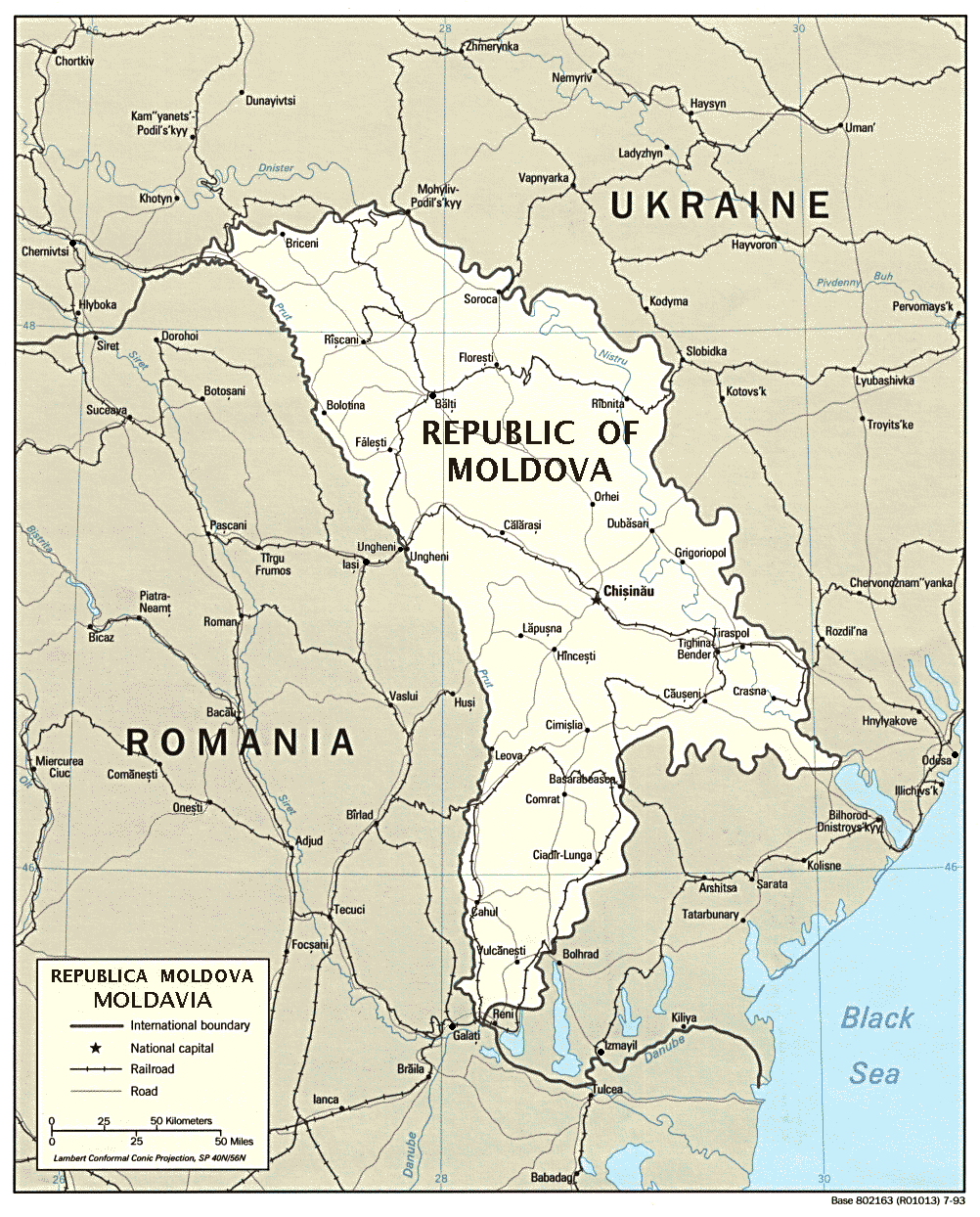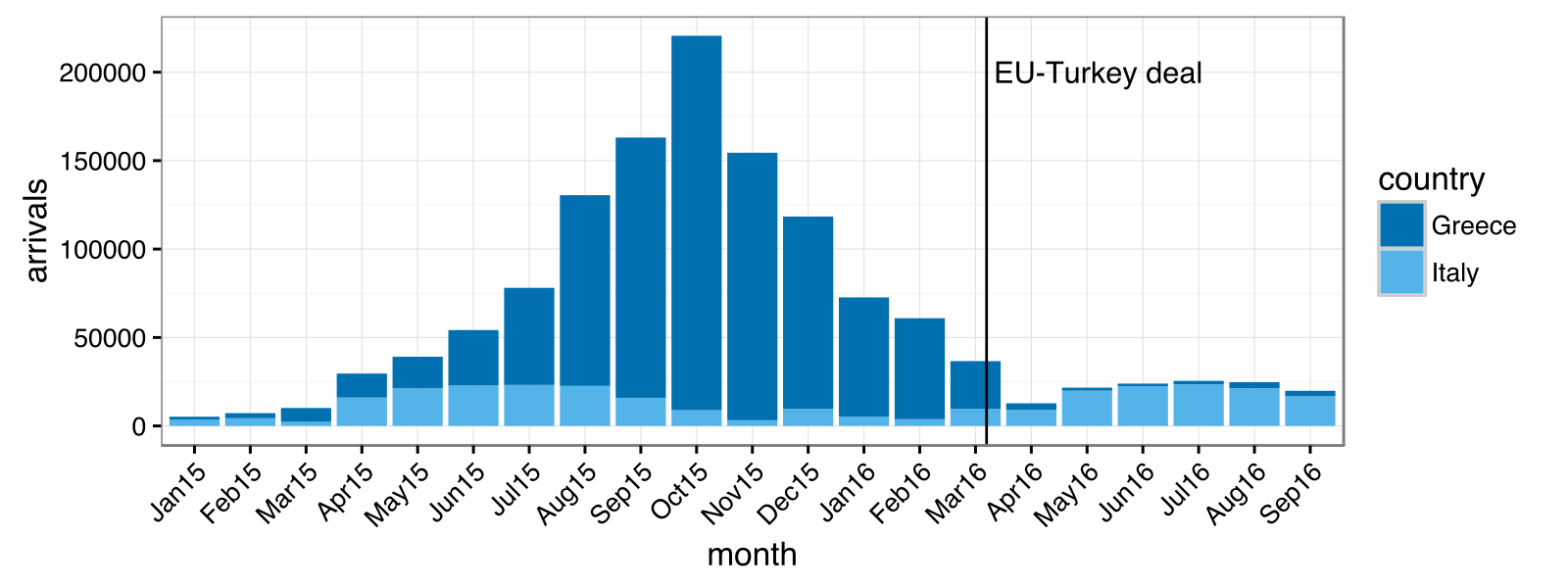|
Refugees In Romania
Refugees in Romania have arrived in multiple waves throughout Romania's history. Historical waves of refugees include the Armenians who fled the Ottoman Empire due to the Armenian genocide in 1915, Greeks who fled persecution after the Greek Civil War and during the Greek military junta of 1967–74, Koreans who fled the Korean War and Chileans fleeing the Military dictatorship of Chile (1973–90). In the 2000s, Romania received refugees from the Middle East, particularly from Iraq following the 2003 invasion of Iraq. During the Syrian civil war and the 2015 European refugee crisis, Romanian society debated whether or not to host refugees from Syria. With a population of Romania in 2022 of about 19,000,000 people, Romania on August 16, 2022, according to the UN, received 1,044,292 Ukrainian refugees. The 2022 Russian invasion of Ukraine that began on 24 February 2022 triggered a major refugee crisis in Europe. By 24 March 2022, more than half a million people from Ukraine ha ... [...More Info...] [...Related Items...] OR: [Wikipedia] [Google] [Baidu] |
Romania
Romania ( ; ro, România ) is a country located at the crossroads of Central Europe, Central, Eastern Europe, Eastern, and Southeast Europe, Southeastern Europe. It borders Bulgaria to the south, Ukraine to the north, Hungary to the west, Serbia to the southwest, Moldova to the east, and the Black Sea to the southeast. It has a predominantly Temperate climate, temperate-continental climate, and an area of , with a population of around 19 million. Romania is the List of European countries by area, twelfth-largest country in Europe and the List of European Union member states by population, sixth-most populous member state of the European Union. Its capital and largest city is Bucharest, followed by Iași, Cluj-Napoca, Timișoara, Constanța, Craiova, Brașov, and Galați. The Danube, Europe's second-longest river, rises in Germany's Black Forest and flows in a southeasterly direction for , before emptying into Romania's Danube Delta. The Carpathian Mountains, which cross Roma ... [...More Info...] [...Related Items...] OR: [Wikipedia] [Google] [Baidu] |
Middle East
The Middle East ( ar, الشرق الأوسط, ISO 233: ) is a geopolitical region commonly encompassing Arabian Peninsula, Arabia (including the Arabian Peninsula and Bahrain), Anatolia, Asia Minor (Asian part of Turkey except Hatay Province), East Thrace (European part of Turkey), Egypt, Iran, the Levant (including Syria (region), Ash-Shām and Cyprus), Mesopotamia (modern-day Iraq), and the Socotra Governorate, Socotra Archipelago (a part of Yemen). The term came into widespread usage as a replacement of the term Near East (as opposed to the Far East) beginning in the early 20th century. The term "Middle East" has led to some confusion over its changing definitions, and has been viewed by some to be discriminatory or too Eurocentrism, Eurocentric. The region includes the vast majority of the territories included in the closely associated definition of Western Asia (including Iran), but without the South Caucasus, and additionally includes all of Egypt (not just the Sina ... [...More Info...] [...Related Items...] OR: [Wikipedia] [Google] [Baidu] |
Immigration To Romania
Immigration to Romania is less common than immigration to most other European Union countries, with Romania having 2.1% of the population foreign born as of 2017 ( Eurostat estimates). Of these, 0.9% were born in other EU member states, and 1.2% were born outside the EU. Romania has recently experienced a growing wave of immigration, mostly from the Republic of Moldova, Turkey, Italy, Spain, Southeast Asia, and East Asia and to a lesser extent other parts of the world. In 2013, there were 198,839 immigrants living in Romania, of which 13,000 were refugees. As of mid-2020, the number of migrants in Romania was 705,000, of which over 40% were from the Republic of Moldova. According to DIICOT, Romania has evolved since 1990 from a country of transit for illegal migrants to a country of destination. Within the European Union, the country has the second highest rate of immigration from non-EU countries (86%), just behind Slovenia (90%). Most immigrants in Romania are from Europe. Among ... [...More Info...] [...Related Items...] OR: [Wikipedia] [Google] [Baidu] |
Refugees In Romania
Refugees in Romania have arrived in multiple waves throughout Romania's history. Historical waves of refugees include the Armenians who fled the Ottoman Empire due to the Armenian genocide in 1915, Greeks who fled persecution after the Greek Civil War and during the Greek military junta of 1967–74, Koreans who fled the Korean War and Chileans fleeing the Military dictatorship of Chile (1973–90). In the 2000s, Romania received refugees from the Middle East, particularly from Iraq following the 2003 invasion of Iraq. During the Syrian civil war and the 2015 European refugee crisis, Romanian society debated whether or not to host refugees from Syria. With a population of Romania in 2022 of about 19,000,000 people, Romania on August 16, 2022, according to the UN, received 1,044,292 Ukrainian refugees. The 2022 Russian invasion of Ukraine that began on 24 February 2022 triggered a major refugee crisis in Europe. By 24 March 2022, more than half a million people from Ukraine ha ... [...More Info...] [...Related Items...] OR: [Wikipedia] [Google] [Baidu] |
Ukrainian Refugee Crisis
An ongoing refugee crisis began in Europe in late February 2022 after 2022 Russian invasion of Ukraine, Russia's invasion of Ukraine. Almost 5.9 million refugees have since left Ukraine, while an estimated 7.7 million people had been Internally displaced person, displaced within the country by 21 April. Approximately one-quarter of Demographics of Ukraine, the country's total population had left their homes in Ukraine by 20 March. 90% of Ukrainian refugees are women and children. By 24 March, more than half of all children in Ukraine had left their homes, of whom a quarter had left the country. The invasion caused Europe's List of largest refugee crises, largest refugee crisis since World War II refugees, World War II and its aftermath, is the first of its kind in Europe since the Yugoslav Wars in the 1990s, and is one of the largest refugee crises of the 21st century, with the highest refugee flight rate globally. The vast majority of refugees directly entered neighbouring nation ... [...More Info...] [...Related Items...] OR: [Wikipedia] [Google] [Baidu] |
Russo-Ukrainian War
The Russo-Ukrainian War; uk, російсько-українська війна, rosiisko-ukrainska viina. has been ongoing between Russia (alongside Russian separatist forces in Donbas, Russian separatists in Ukraine) and Ukraine since February 2014. Following Ukraine's Revolution of Dignity, Russia Annexation of Crimea by the Russian Federation, annexed Crimea from Ukraine and supported pro-Russian separatists in the War in Donbas (2014–2022), war in Donbas against Ukrainian government forces; fighting for the first eight years of the conflict also included List of Black Sea incidents involving Russia and Ukraine, naval incidents, Russian–Ukrainian cyberwarfare, cyberwarfare, and Russia–Ukraine relations, heightened political tensions. In February 2022, the conflict saw a major escalation as Russia launched a 2022 Russian invasion of Ukraine, full-scale invasion of Ukraine. In early 2014, pro-Russian Ukrainian president Viktor Yanukovych was ousted from office as a r ... [...More Info...] [...Related Items...] OR: [Wikipedia] [Google] [Baidu] |
2022 Ukrainian Refugee Crisis
An ongoing refugee crisis began in Europe in late February 2022 after Russia's invasion of Ukraine. Almost 5.9 million refugees have since left Ukraine, while an estimated 7.7 million people had been displaced within the country by 21 April. Approximately one-quarter of the country's total population had left their homes in Ukraine by 20 March. 90% of Ukrainian refugees are women and children. By 24 March, more than half of all children in Ukraine had left their homes, of whom a quarter had left the country. The invasion caused Europe's largest refugee crisis since World War II and its aftermath, is the first of its kind in Europe since the Yugoslav Wars in the 1990s, and is one of the largest refugee crises of the 21st century, with the highest refugee flight rate globally. The vast majority of refugees directly entered neighbouring nations to the west of Ukraine. Poland has received more refugees from Ukraine than all other European countries combined. Other countries neig ... [...More Info...] [...Related Items...] OR: [Wikipedia] [Google] [Baidu] |
2022 Russian Invasion Of Ukraine
On 24 February 2022, in a major escalation of the Russo-Ukrainian War, which began in 2014. The invasion has resulted in tens of thousands of deaths on both sides. It has caused Europe's largest refugee crisis since World War II. An estimated 8 million Ukrainians were displaced within their country by late May and 7.8 million fled the country by 8 November 2022, while Russia, within five weeks of the invasion, experienced its greatest emigration since the 1917 October Revolution. Following the 2014 Ukrainian Revolution, Russia annexed Crimea, and Russian-backed paramilitaries seized part of the Donbas region of south-eastern Ukraine, which consists of Luhansk and Donetsk oblasts, sparking a regional war. In March 2021, Russia began a large military build-up along its border with Ukraine, eventually amassing up to 190,000 troops and their equipment. Despite the build-up, denials of plans to invade or attack Ukraine were issued by various Russian gove ... [...More Info...] [...Related Items...] OR: [Wikipedia] [Google] [Baidu] |
European Migrant Crisis
The 2015 European migrant crisis, also known internationally as the Syrian refugee crisis, was a period of significantly increased movement of refugees and migrants into Europe in 2015, when 1.3 million people came to the continent to request asylum, the most in a single year since World War II. Those requesting asylum in Europe in 2015 were mostly Syrians, but also included significant numbers of Afghans, Nigerians, Pakistanis, Iraqis and Eritreans, as well as economic migrants from the Balkans. Europe had already begun registering increased numbers of refugee arrivals in 2010 due to a confluence of conflicts in parts of the Middle East, Asia and Africa, particularly the wars in Syria, Iraq and Afghanistan, but also terrorist insurgencies in Nigeria and Pakistan, and long-running human rights abuses in Eritrea, all contributing to refugee flows. Many millions initially sought refuge in comparatively stable countries near their origin, but while these countries were largely ... [...More Info...] [...Related Items...] OR: [Wikipedia] [Google] [Baidu] |
2003 Invasion Of Iraq
The 2003 invasion of Iraq was a United States-led invasion of the Republic of Iraq and the first stage of the Iraq War. The invasion phase began on 19 March 2003 (air) and 20 March 2003 (ground) and lasted just over one month, including 26 days of major combat operations, in which a combined force of troops from the United States, the United Kingdom, Australia, and Poland invaded Iraq. Twenty-two days after the first day of the invasion, the capital city of Baghdad was captured by Coalition forces on 9 April 2003 after the six-day-long Battle of Baghdad. This early stage of the war formally ended on 1 May 2003 when U.S. President George W. Bush declared the "end of major combat operations" in his Mission Accomplished speech, after which the Coalition Provisional Authority (CPA) was established as the first of several successive transitional governments leading up to the first Iraqi parliamentary election in January 2005. U.S. military forces later remained in Iraq unt ... [...More Info...] [...Related Items...] OR: [Wikipedia] [Google] [Baidu] |





